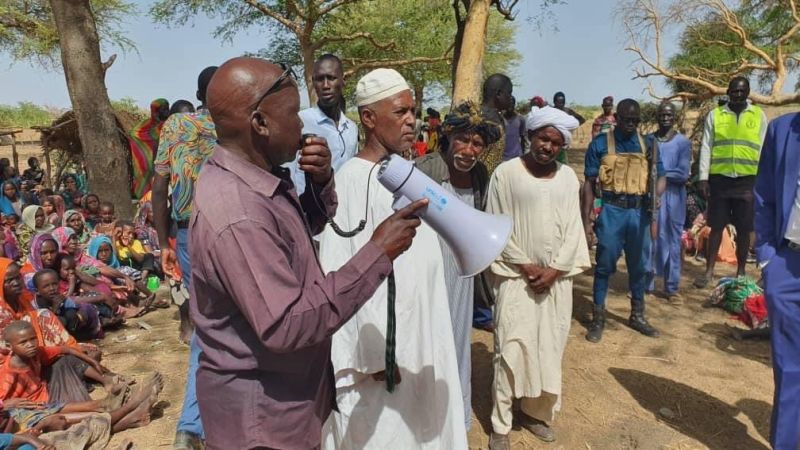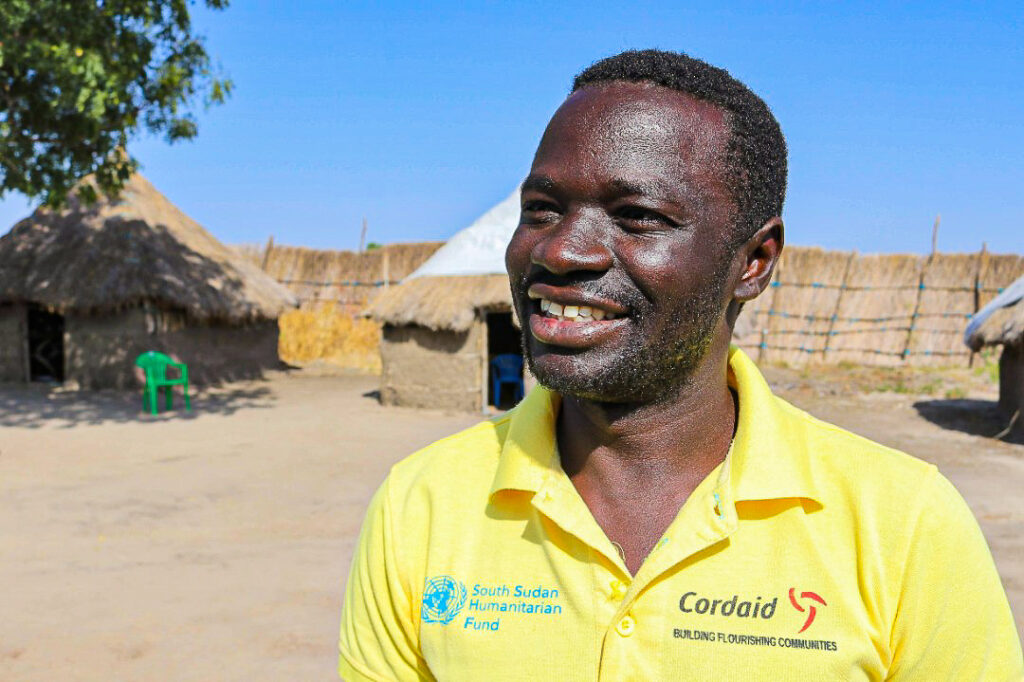The recent conflict in Sudan adds another tragic chapter to the lives of many in this volatile African region. Thousands of people who had fled the violence in South Sudan earlier and found refuge in the arms of their northern neighbour are now forced to leave everything behind for a second time. Cordaid supports this especially hard-hit group with humanitarian assistance in various forms.

The fate of the returnees is cynical, as they have nowhere to go but return to the towns they fled from years ago. Places where also today they will not find a true safe haven or the necessary opportunities to build a healthy and dignified life.
Bashir James, a South Sudanese national himself, works as a humanitarian programme manager for Cordaid in the capital Juba. This week he travels to the border region to coordinate the emergency activities for people who truly – and quite literally – have been caught between a rock and a hard place.
“Those who are lucky, cross the border and have an address, a family member, or at least a village they can go back to”, Bashir says. “But many of them are lost. They might have lived their entire lives in Sudan and have never even been to South Sudan. Perhaps they lost contact with their relatives and have no idea who to turn to.”
According to Bashir, every day up to 600 people cross the border into South Sudan, now totalling about 60,000 returnees since the escalation of the conflict. “That is through the official entry points, but there are also undocumented routes, so there are more. The numbers are growing, and with that, the needs are increasing. Also, with the violence spilling over into other Sudanese regions, like Darfur, we can expect more people to come.”
“Thousands of people are stuck in a very harsh environment, without essential services. They need to get out of there.”
South Sudan is an unstable and seriously conflict-affected country itself. Is it even safe enough for people to return to?
“Most people fled South Sudan at the height of the war. Now they return to a place where it is relatively calm. There are still isolated incidents of violence, some groups are committing acts of revenge, for example, but there is no actual military conflict going on at the moment.”
What can you tell us about the situation at the border? How are people being received there?
“The South Sudanese government said it will not be opening new refugee settlements. The returnees will go to their places of origin and refugees will be sent to the already existing settlements. However, travelling here is not easy and thousands of people are stuck in a very harsh environment, without essential services.”
What can we do to support them?
“They need to get out of there, so they need transportation. Our partners in the area are hiring large boats to bring people to their villages via the river. They have also chartered private planes. I believe the coming weeks our focus will remain on transportation, as it is an obvious gap.”

Will it be possible to transport all the people who cross the border each day to a safe place?
“We need to realise that many people will also spend a significant amount of time at the border or in the transit locations. We will support them with cash, so they can buy food and medicines, or whatever they need most. We will also provide clean water and materials to build shelters at the arrival locations.”
That sounds a bit like setting up a refugee settlement. Wouldn’t that be going against the government’s restrictions?
“The shelters will be very basic and strictly temporary. There won’t be any new settlements, but we cannot ignore the fact that lots of people will be staying at the transit points for some time. We need to protect them from the sun and other weather conditions.”
How many people will you support with these activities?
“We are aiming for 1,000 households, which is roughly 6,000 people.”
The amount of crises in South Sudan is almost unimaginable. There is flooding, droughts, violence, and extreme poverty and now the country has to take in large numbers of people seeking refuge, without hardly being able to guarantee the safety of its own citizens. Where do you see this going in the foreseeable future?
“I’m afraid the conflict in Sudan will become another protracted crisis. I believe many people would like to return once the situation allows it, but all these people already lost everything when they fled the first time and now they see their livelihoods being destroyed again. They will have to start over another time, from zero. Those people need our support. On top of that, this crisis also deserves greater international attention. South Sudan was already crumbling under the weight of all the problems it had before this latest crisis. More support is urgent and much-needed. But whatever happens, we will always remain optimistic. Thankfully, we are very resilient people.”
Would you like to read more about this topic? The Mission Aviation Fellowship created an extensive article on the situation at the transit locations and the actions taken by the Cordaid team.